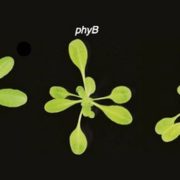
Update: Phytochrome, Carbon Sensing, Metabolism, and Plant Growth Plasticity
Blog, Plant Physiology, Plant Physiology: UpdatesBy Johanna Krahmer, Ashwin Ganpudi, Ammad Abbas, Andrés Romanowski, and Karen J. Halliday
Plants continuously monitor fluctuations in their environment and actively adjust their metabolism to cope with variations in light and carbon resource availability. However, the links between photoreceptor signaling…

Update: Diffuse Growth of Plant Cell Walls
Blog, Plant Physiology, Plant Physiology: UpdatesBy Daniel Cosgrove
The primary wall of a growing cell is a versatile, subtle, and dynamic structure, with unique properties and functions in the life of the plant (Burton et al., 2010). When a cell grows, its wall stretches irreversibly as the cell enlarges in volume. Cells can start and stop this…

Update: The role of trehalose 6-phosphate in crop yield and resilience
Blog, Plant Physiology, Plant Physiology: UpdatesBy Matthew J. Paul, Asier Gonzalez-Uriarte, Cara A. Griffiths, and Keywan Hassani-Pak
Significant increases in global food security require improving crop yields in favourable and poor conditions alike. However, it is challenging to increase both the crop yield potential and yield resilience simultaneously,…

Update: Ethylene exerts species-specific and age-dependent control of photosynthesis
Blog, Plant Physiology, Plant Physiology: UpdatesBy Johan Ceuster and Bram Van de Poel
Abstract
The volatile plant hormone ethylene plays a regulatory role in many developmental processes and in biotic and abiotic stress responses. One of the under-explored actions of ethylene is its regulation of photosynthesis and associated components such…
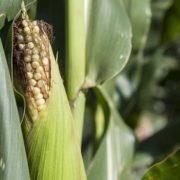
Sweet route to greater yields
Plant Physiology, Plant Physiology: Editorials, ResearchThree years ago, biotechnologists demonstrated in field trials that they could increase the productivity of maize by introducing a rice gene into the plant that regulated the accumulation of sucrose in kernels and led to more kernels per maize plant.
They knew that the rice gene affected the performance…
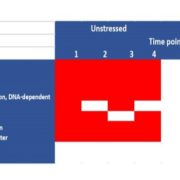
Trehalose-6-Phosphate and Reproductive Resource Allocation in Maize
Plant Physiology, Plant Physiology: On The InsideFlowering is a developmental stage that is particularly sensitive to drought; restriction of water at this time can decrease seed set, final seed number, and harvested seed yield. Kernel abortion during drought at flowering can be alleviated by supplying Suc to reproductive tissue. Consequently, Suc…
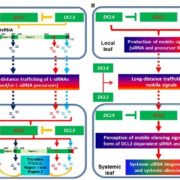
Systemic RNA Silencing in Tobacco
Plant Physiology, Plant Physiology: On The Insidegene RNA silencing is a cellular gene regulatory mechanism that is conserved across fungal, plant, and animal kingdoms. Through sequence-specific targeting, RNA silencing can degrade mRNA for posttranscriptional gene silencing (PTGS) or modify related DNA for transcriptional gene silencing. RNA silencing…
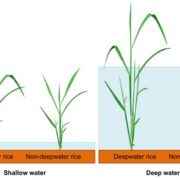
Transcriptome Studies of Deepwater Rice
Plant Physiology, Plant Physiology: On The InsideRice (Oryza sativa) paddies frequently become submerged during the rainy season in some parts of South and Southeast Asia, such as Bangladesh, India, Thailand, Vietnam, and Cambodia. Submergence stress is harmful to plants. In addition to causing O2- and CO2-deficient conditions by restricting environmental…
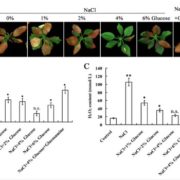
Apple Hexokinase Mediates Response to Salinity Stress
Plant Physiology, Plant Physiology: On The InsideAbiotic stresses such as drought, salinity, low temperature, and flooding usually lead to sugar accumulation. It has been reported that the accumulation of Glc, Suc, and Fru under high salinity plays an important role in carbon storage, osmotic regulation, and homeostasis, as well as scavenging of free…

